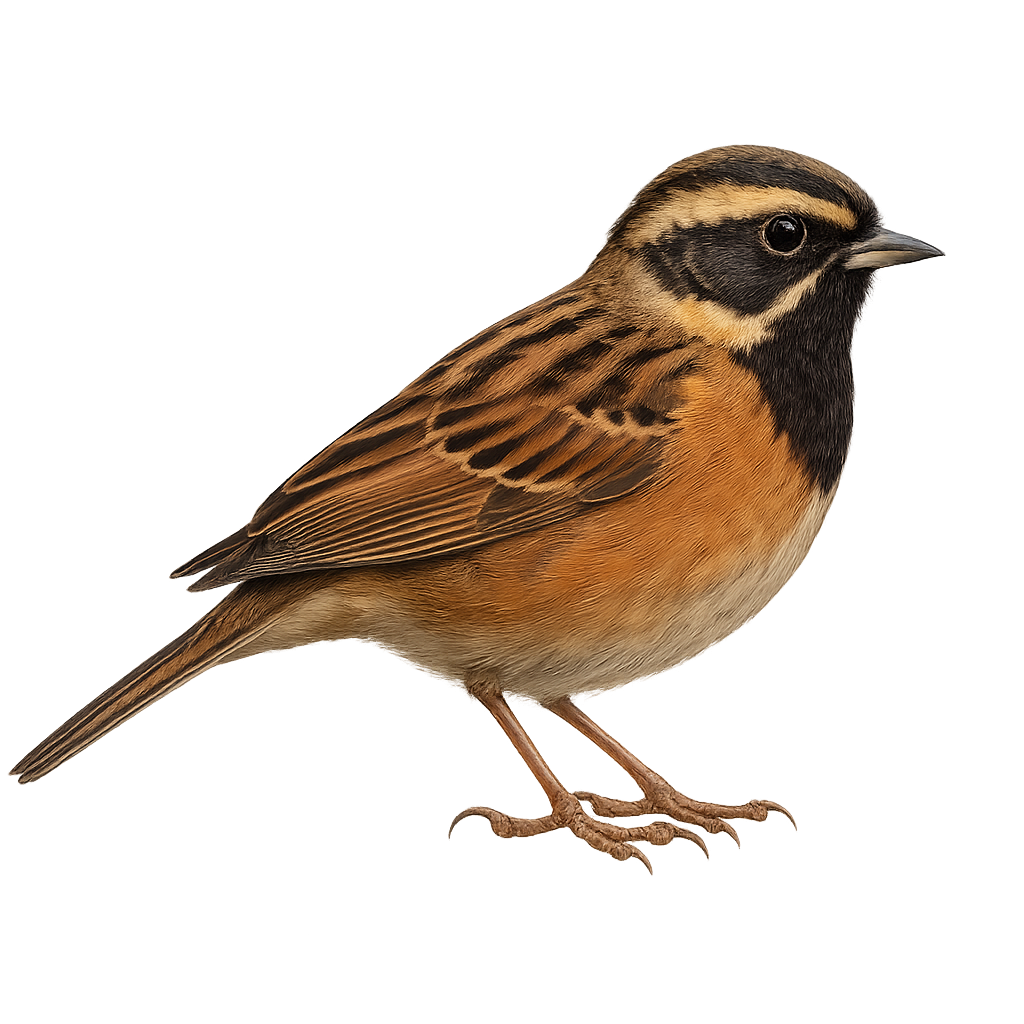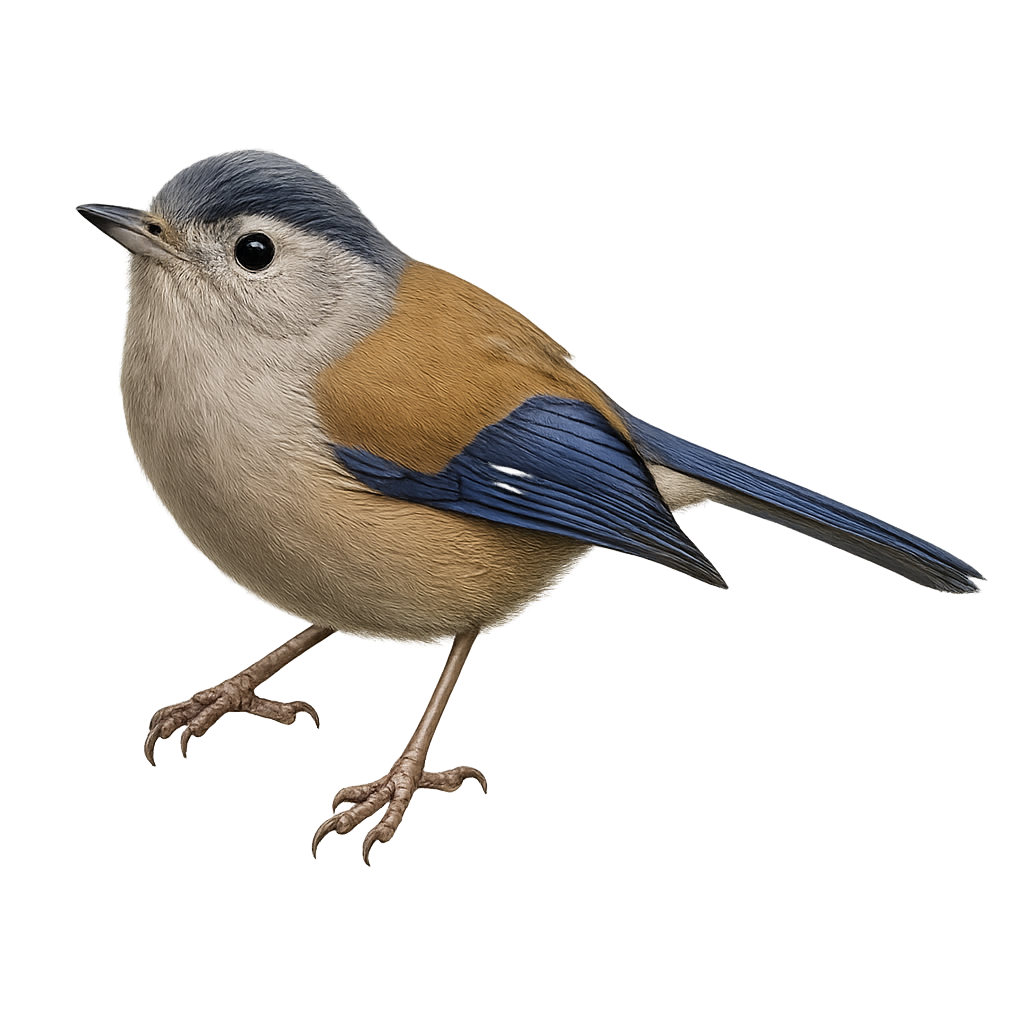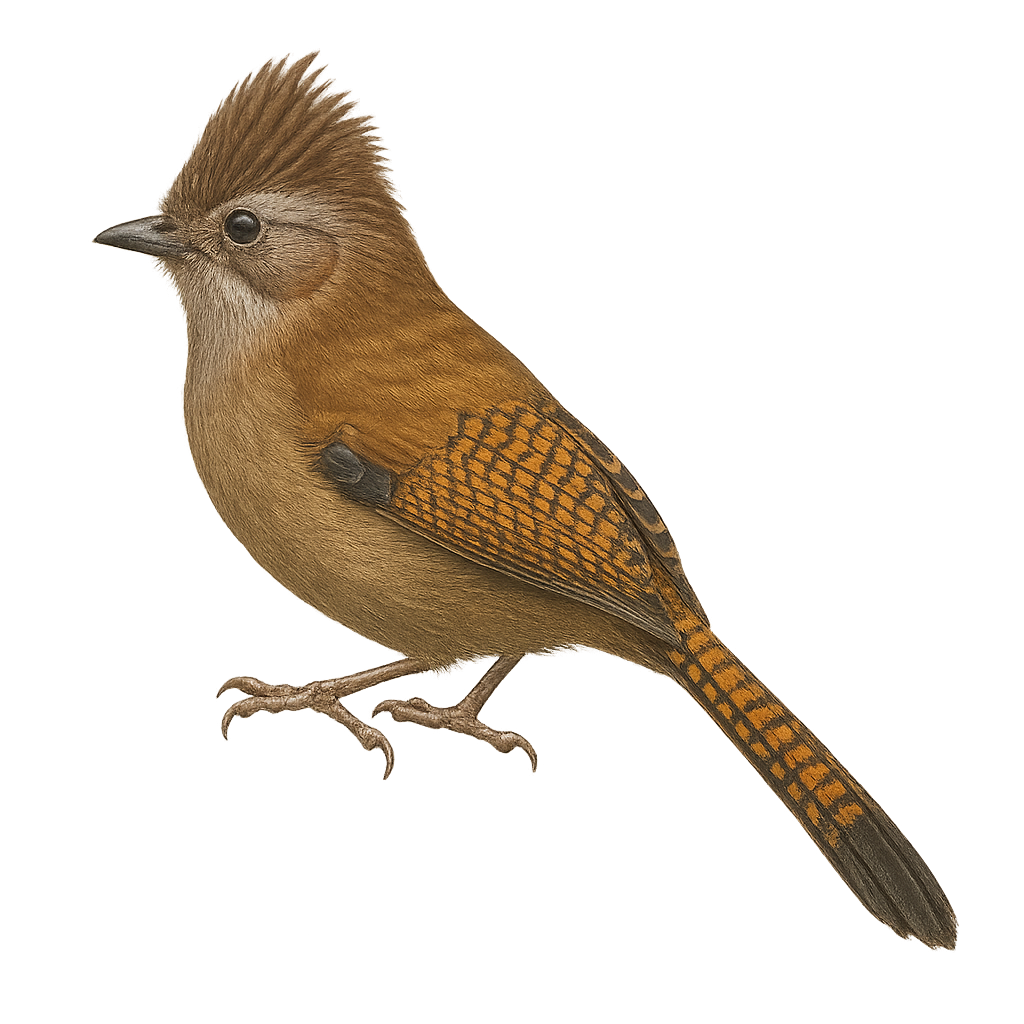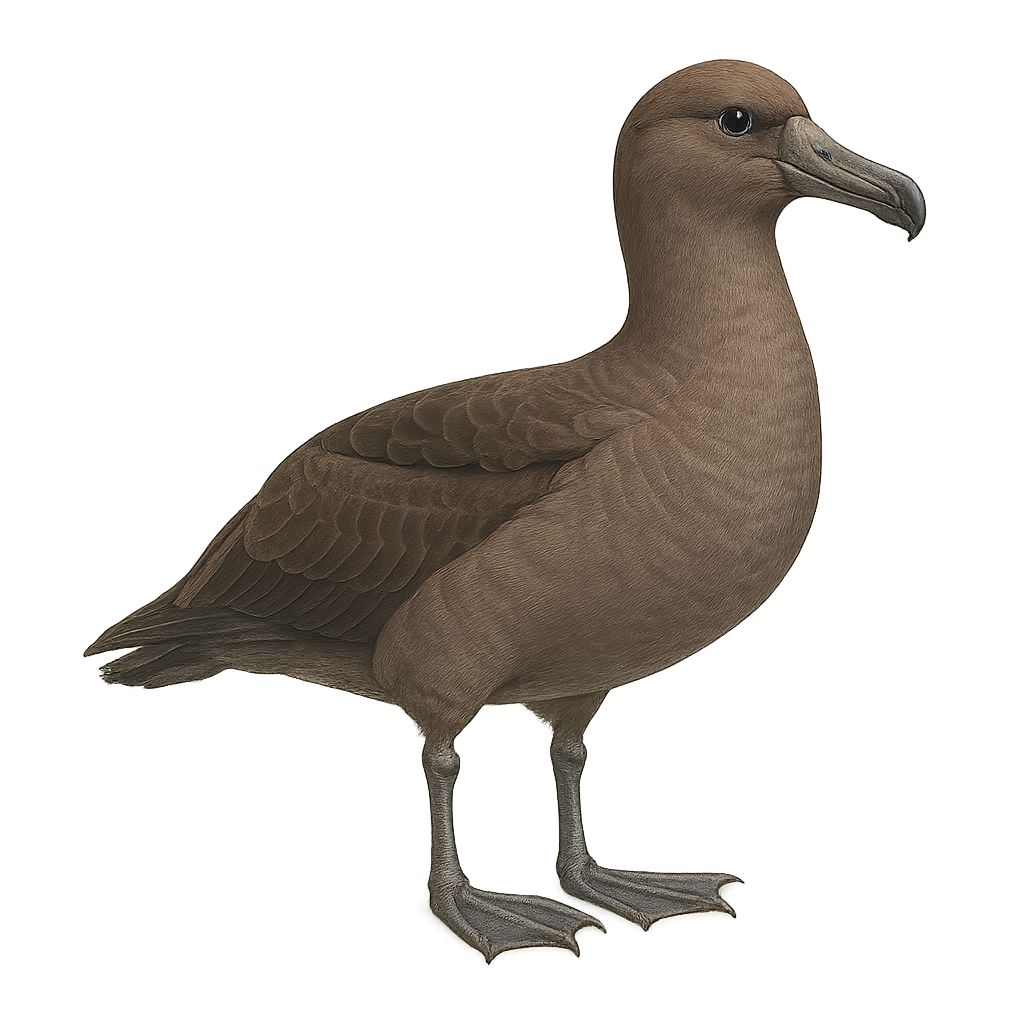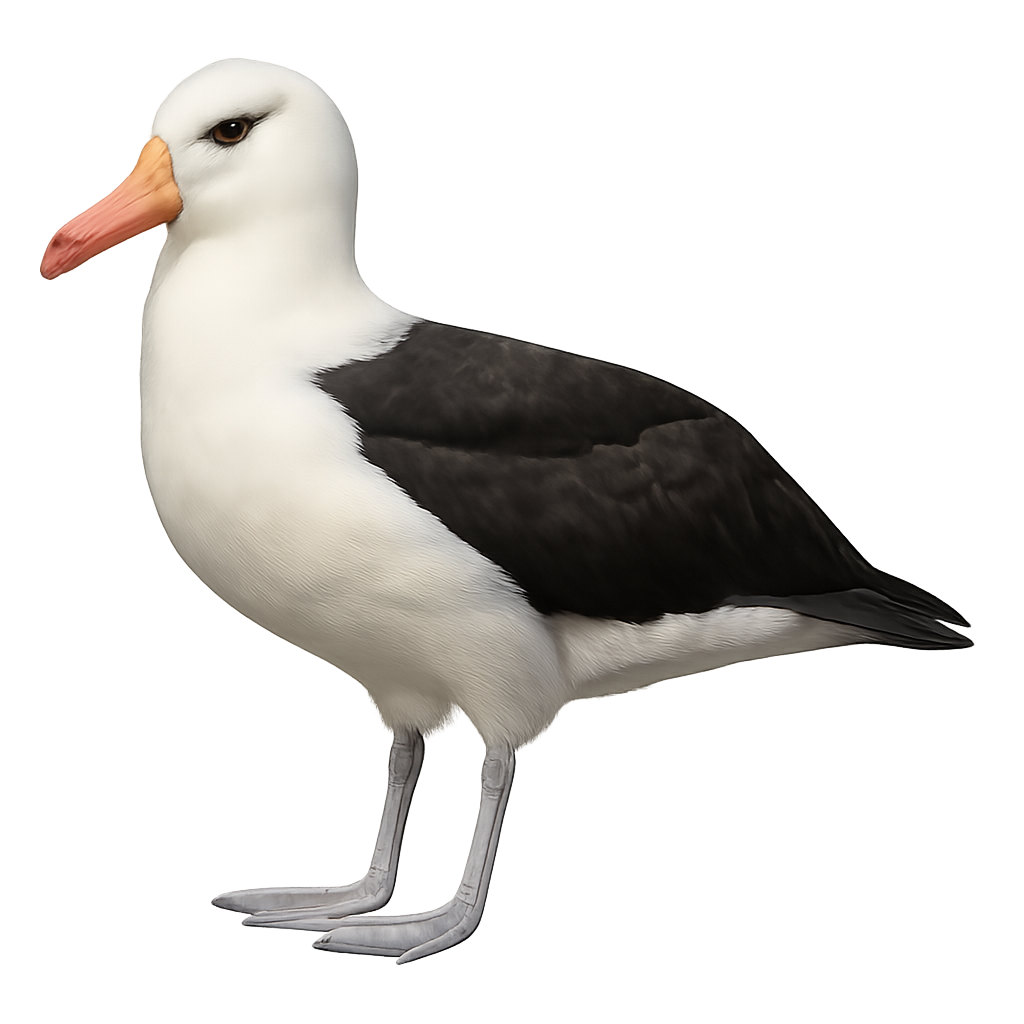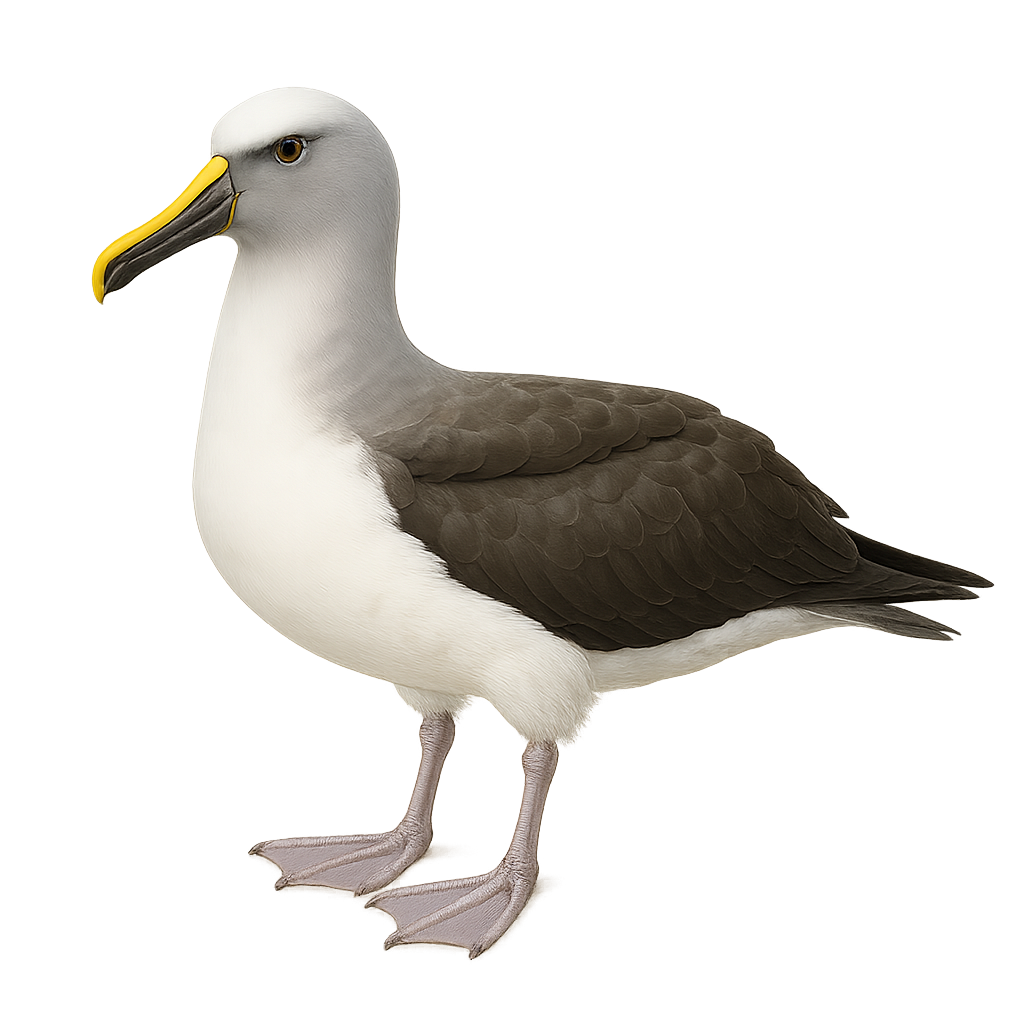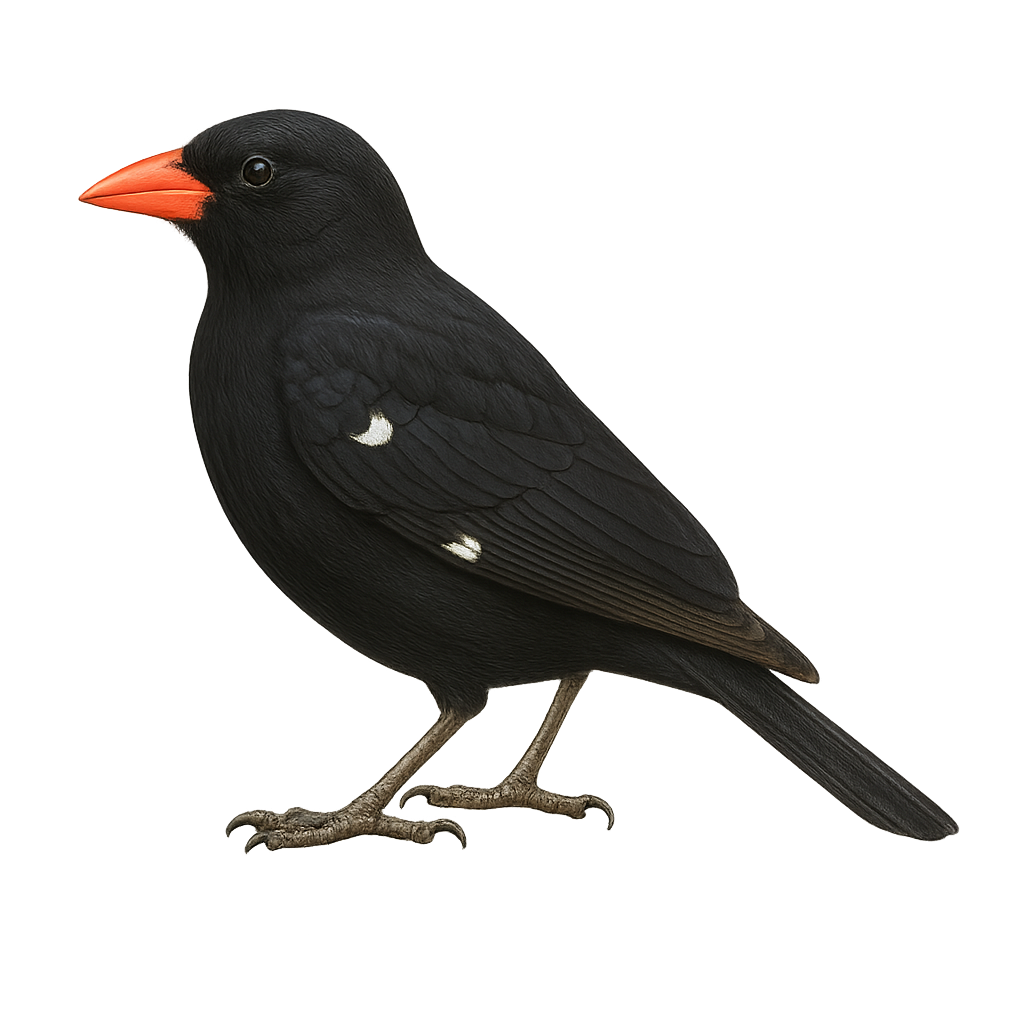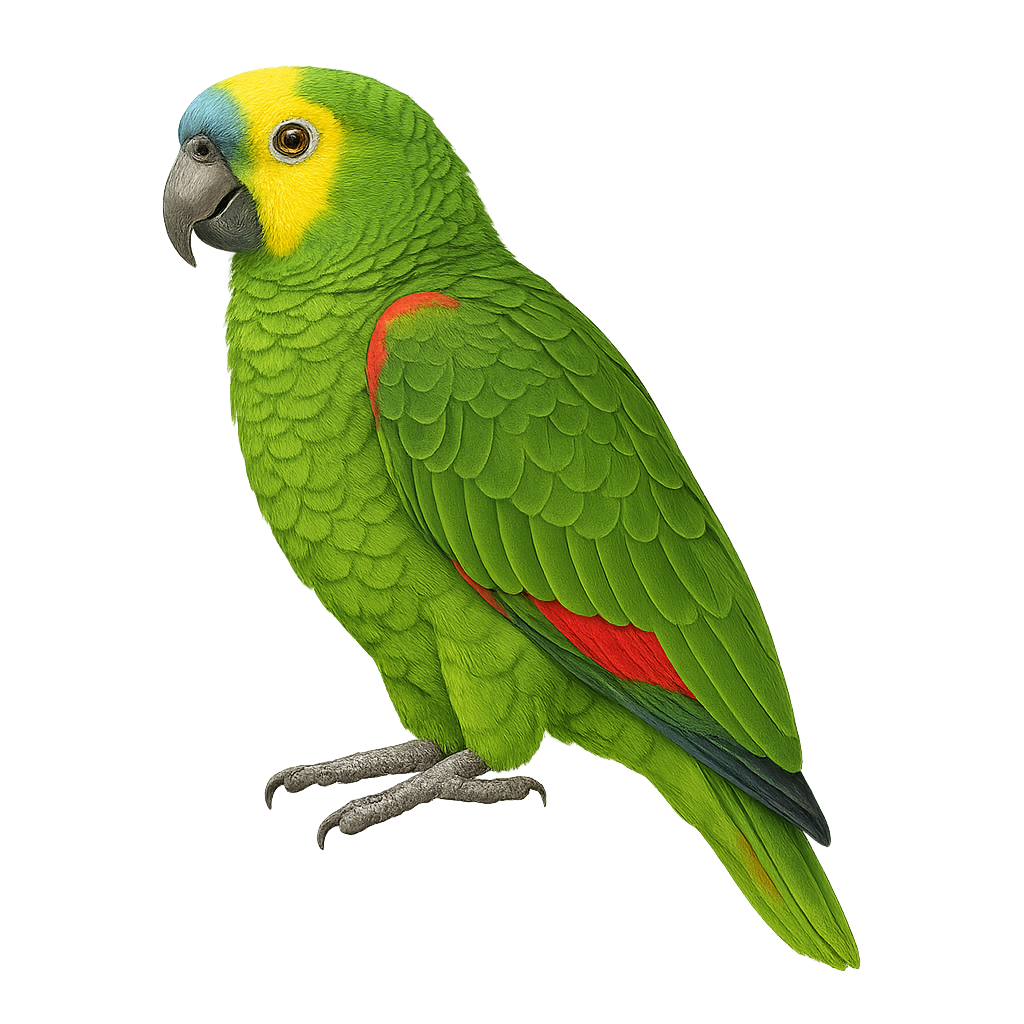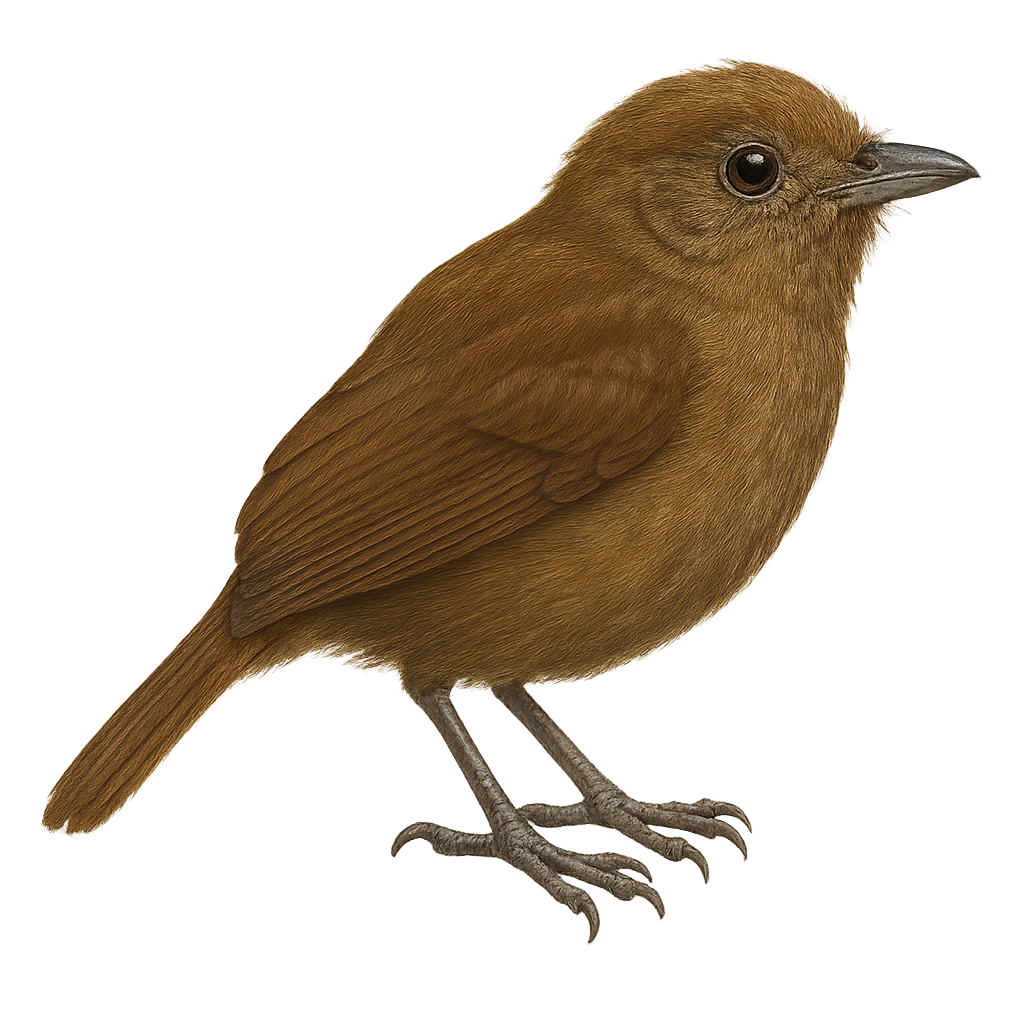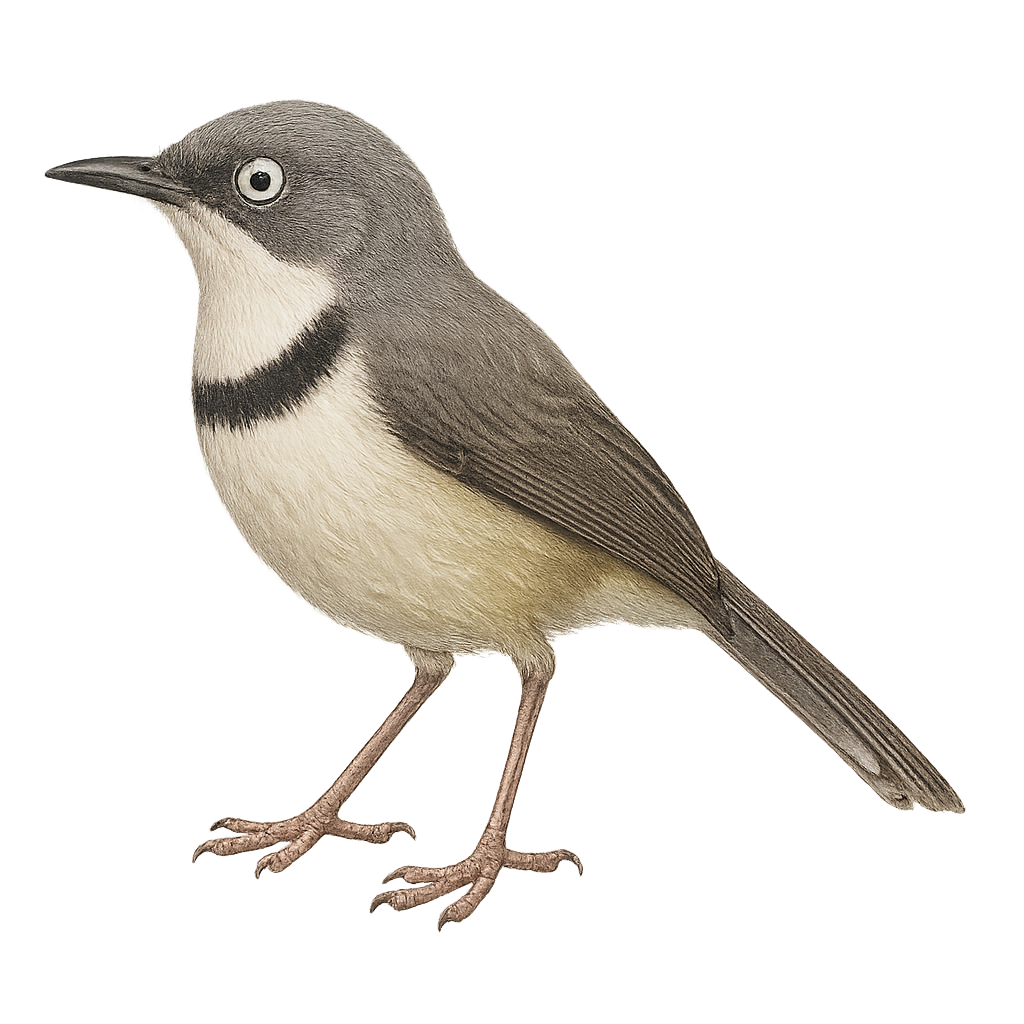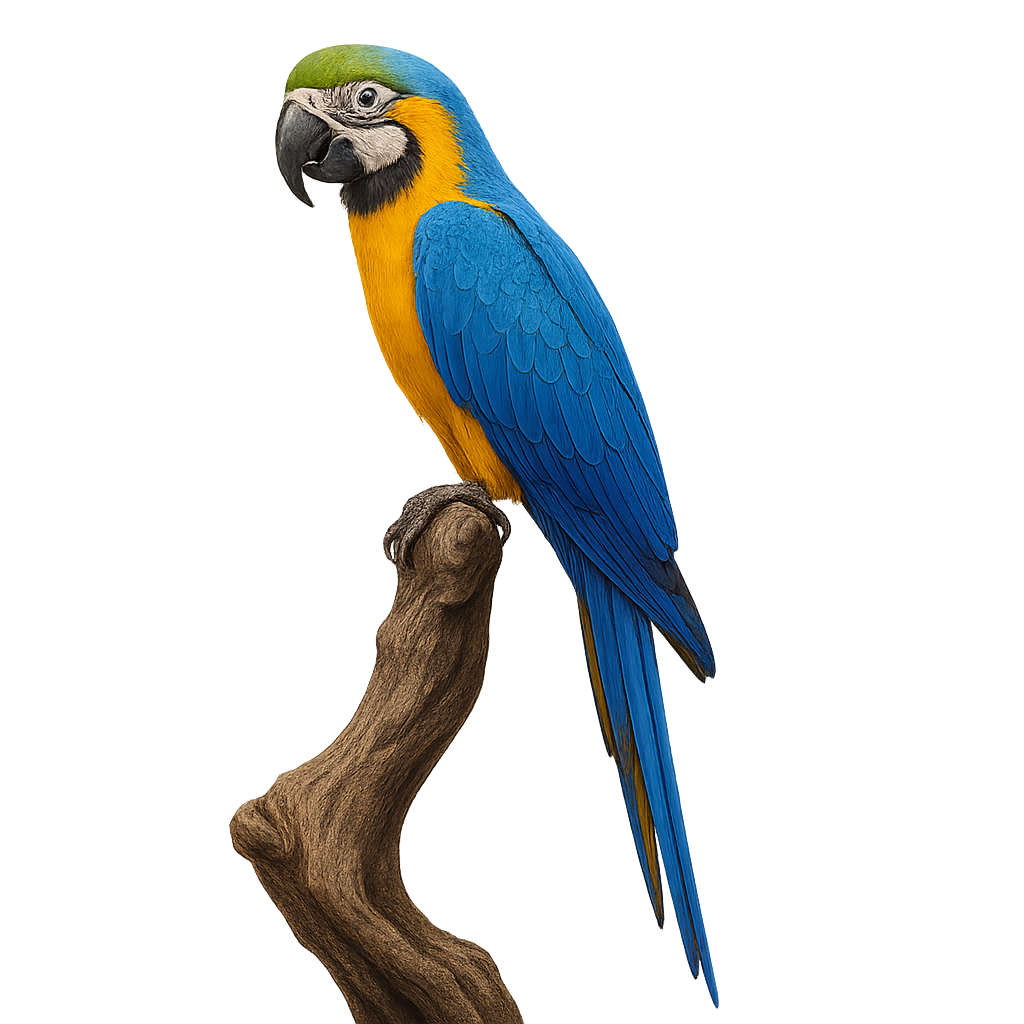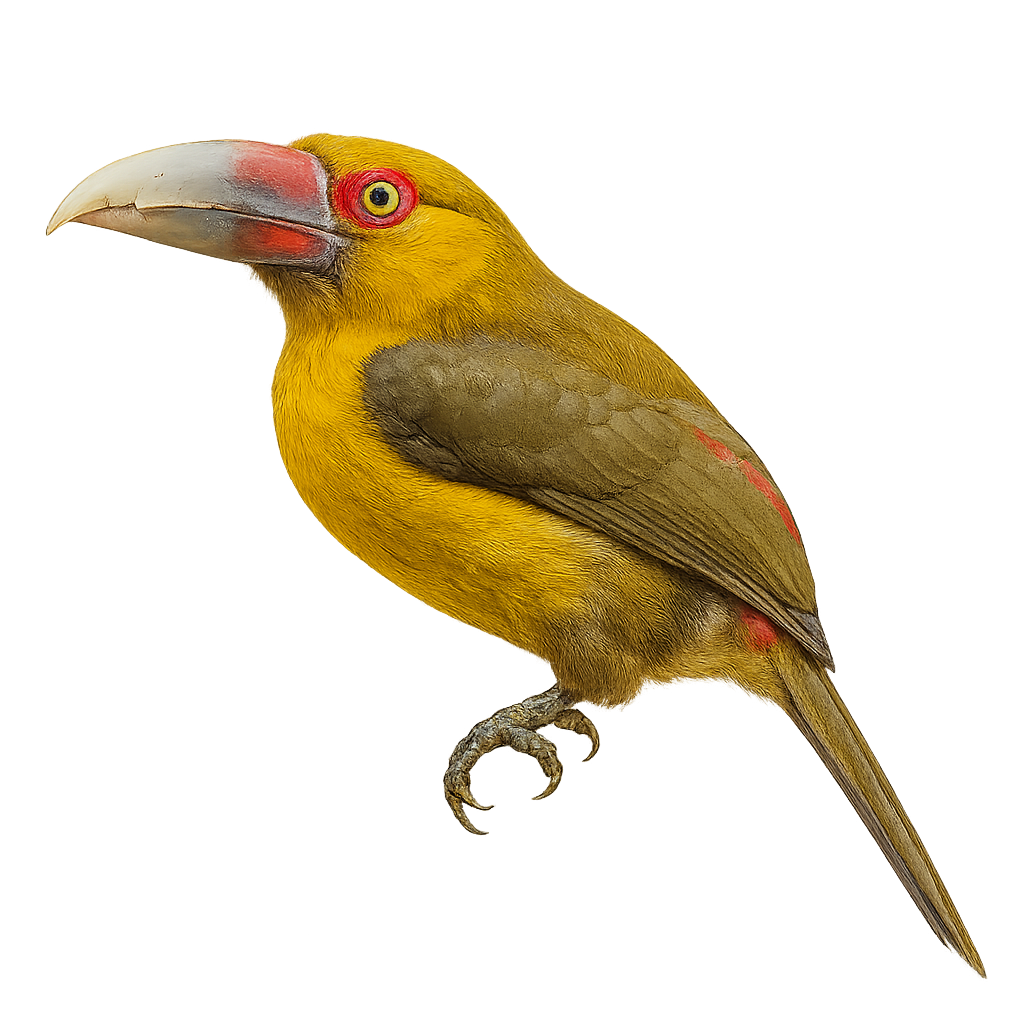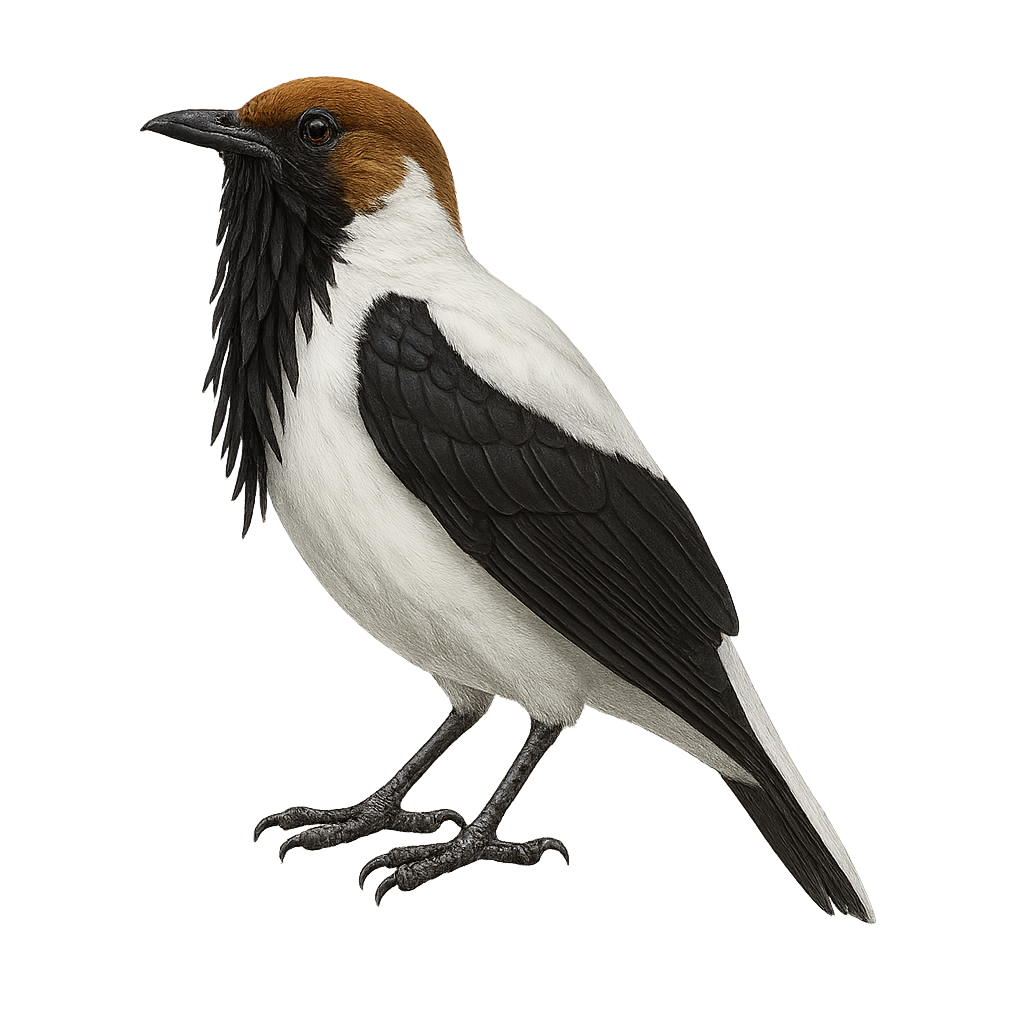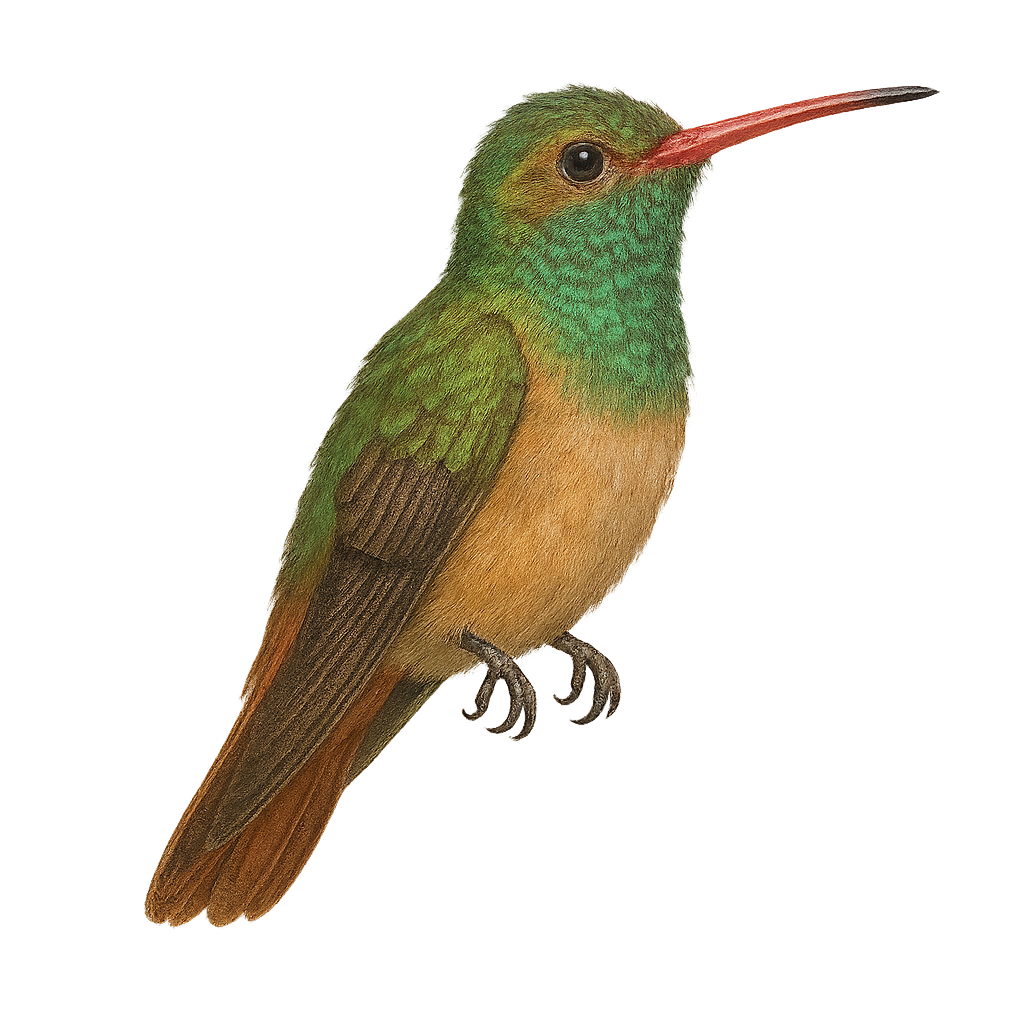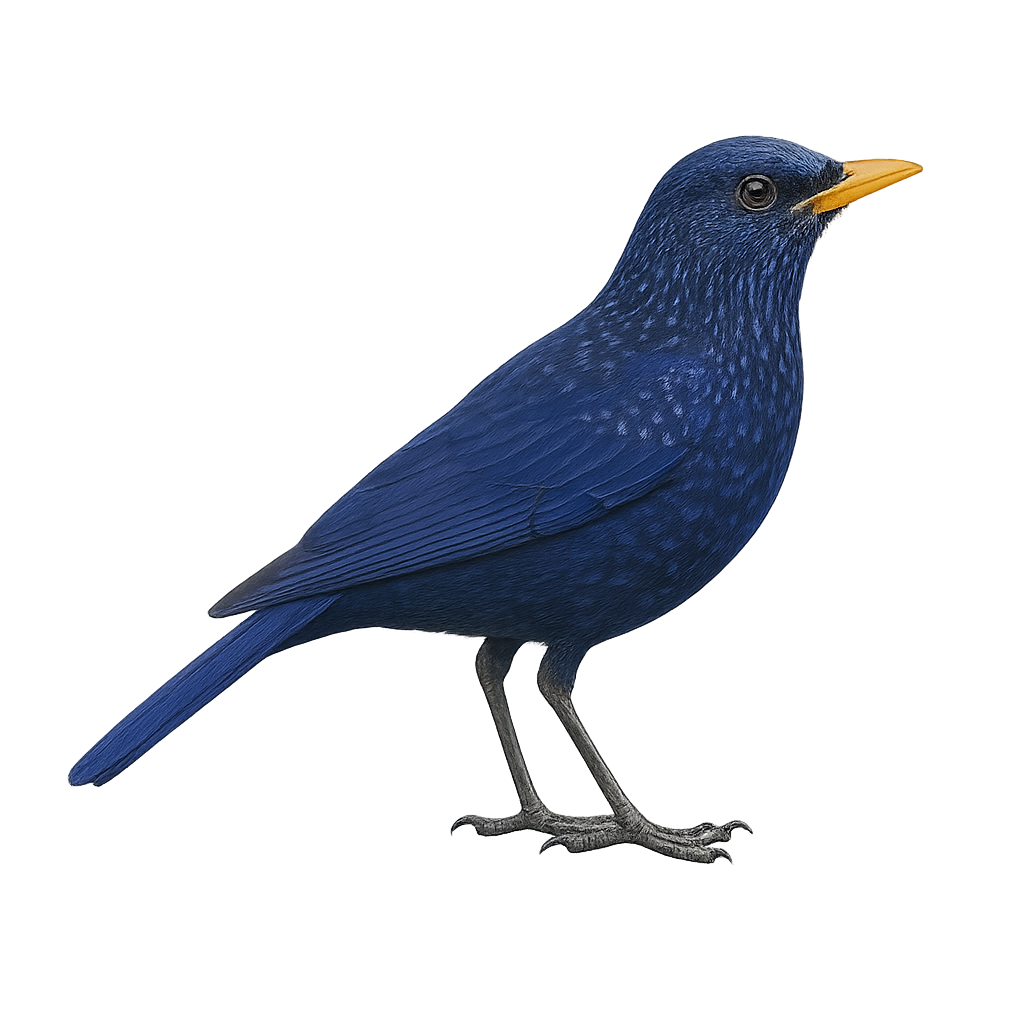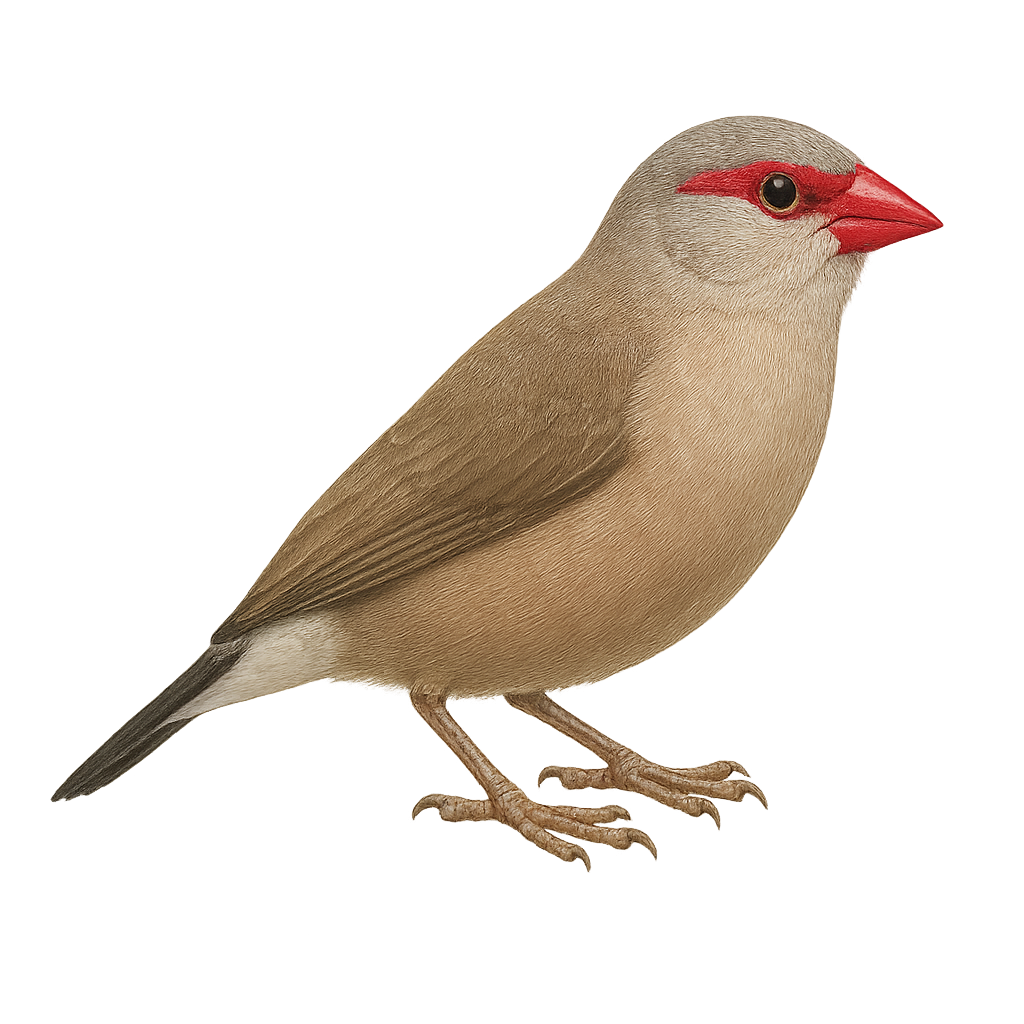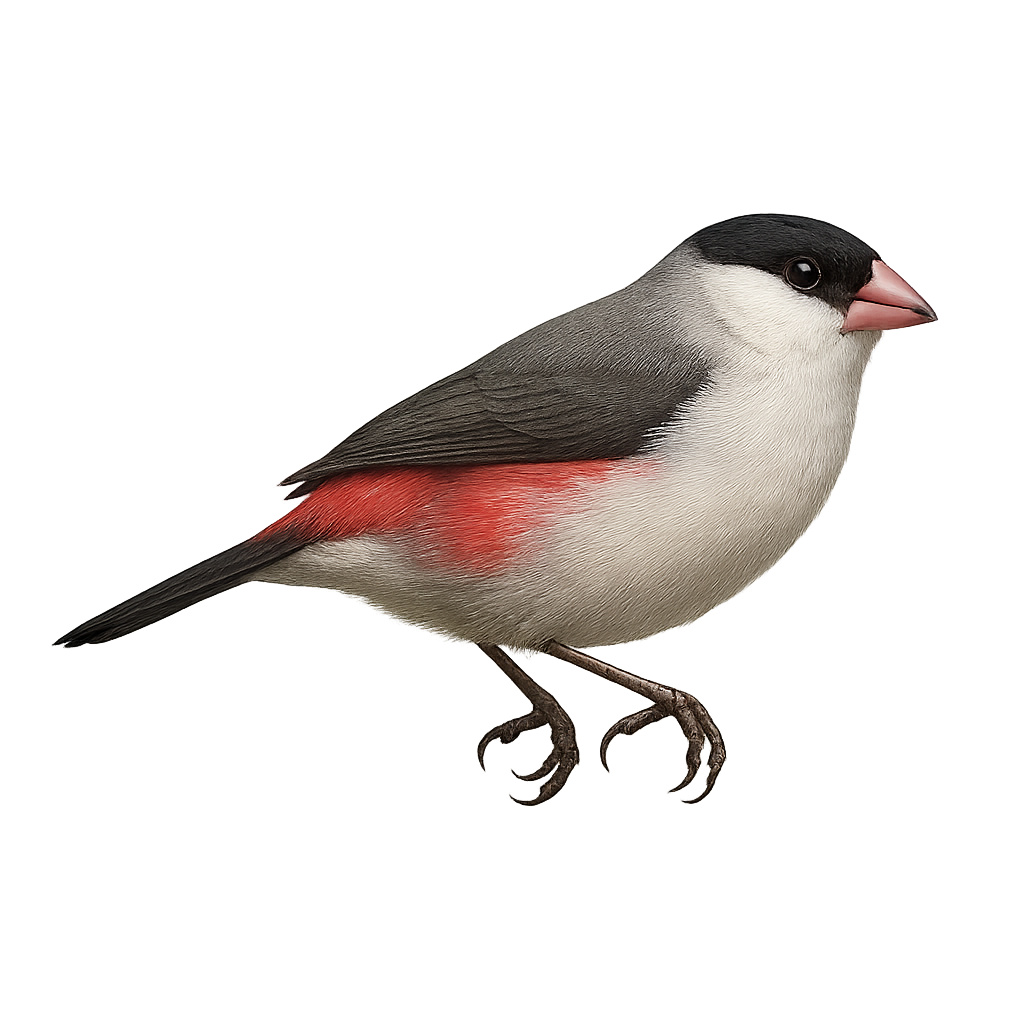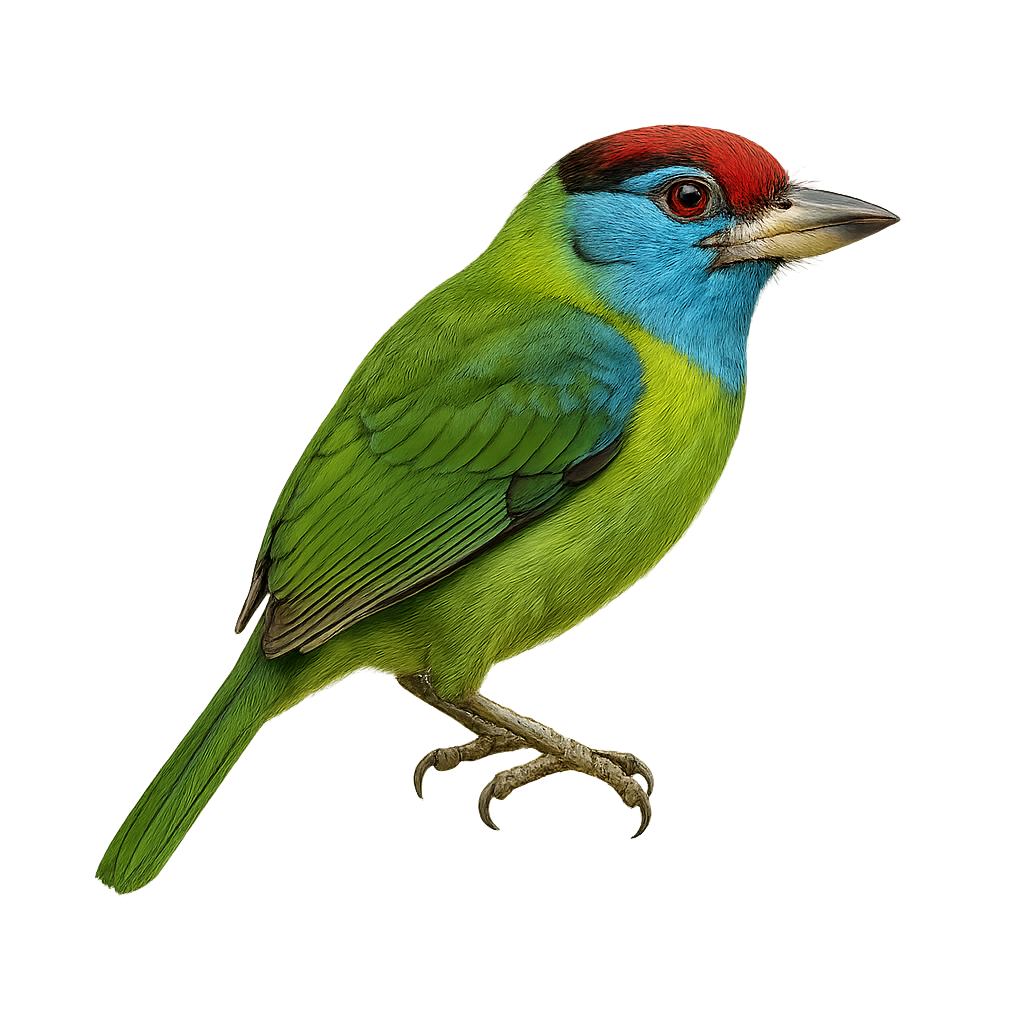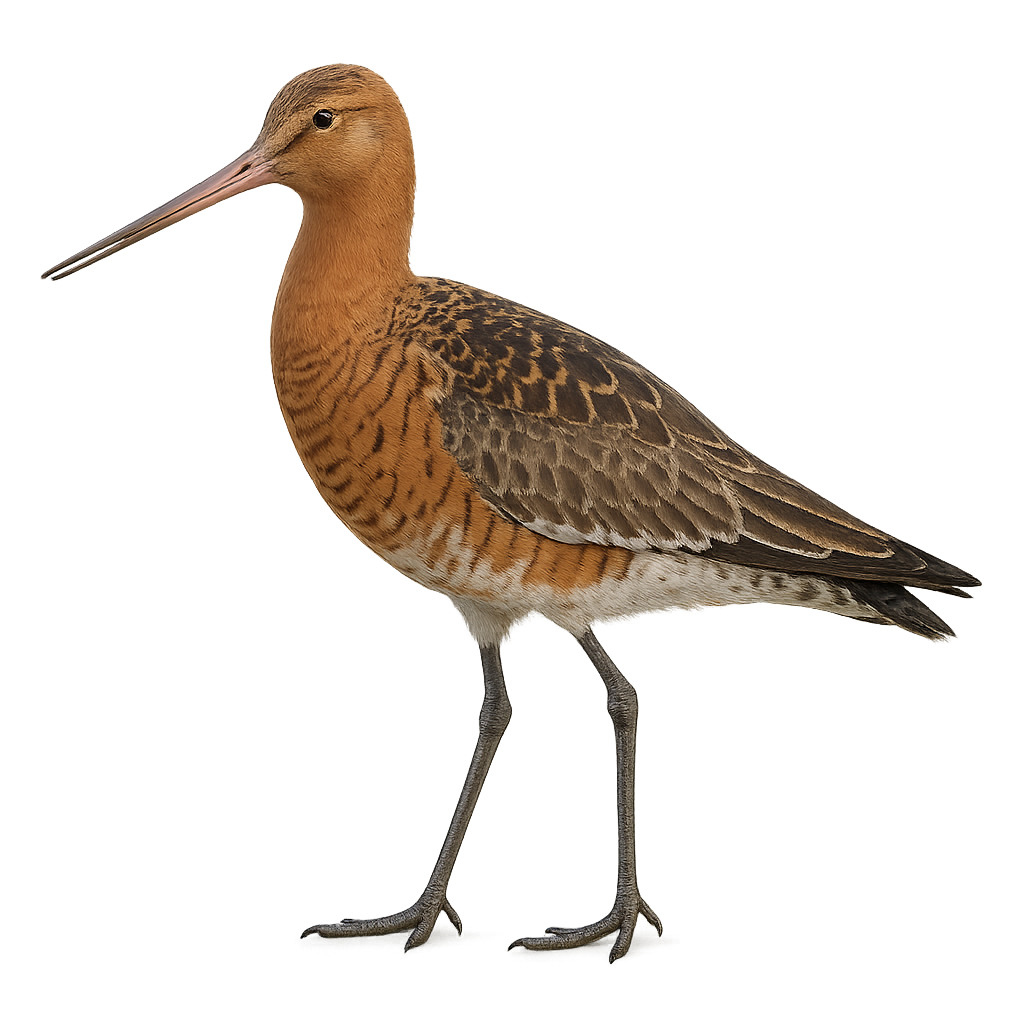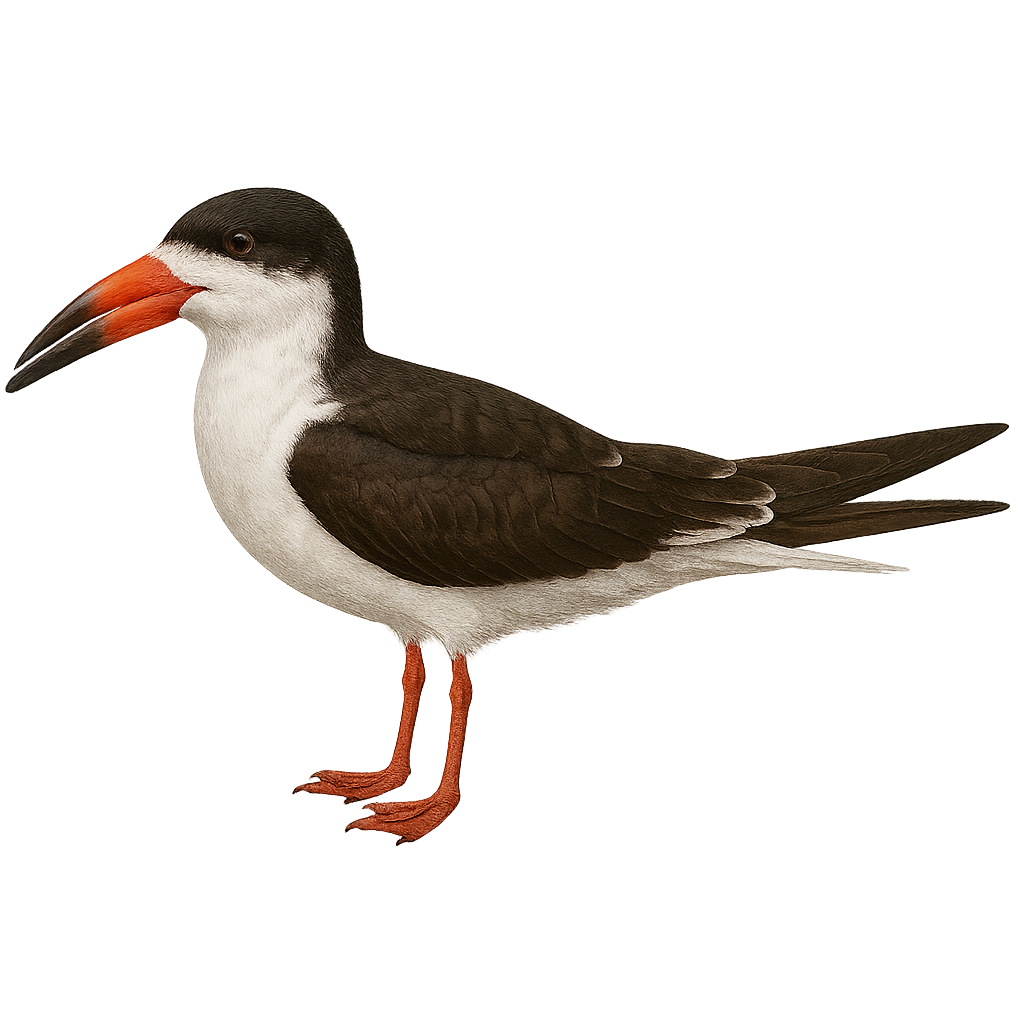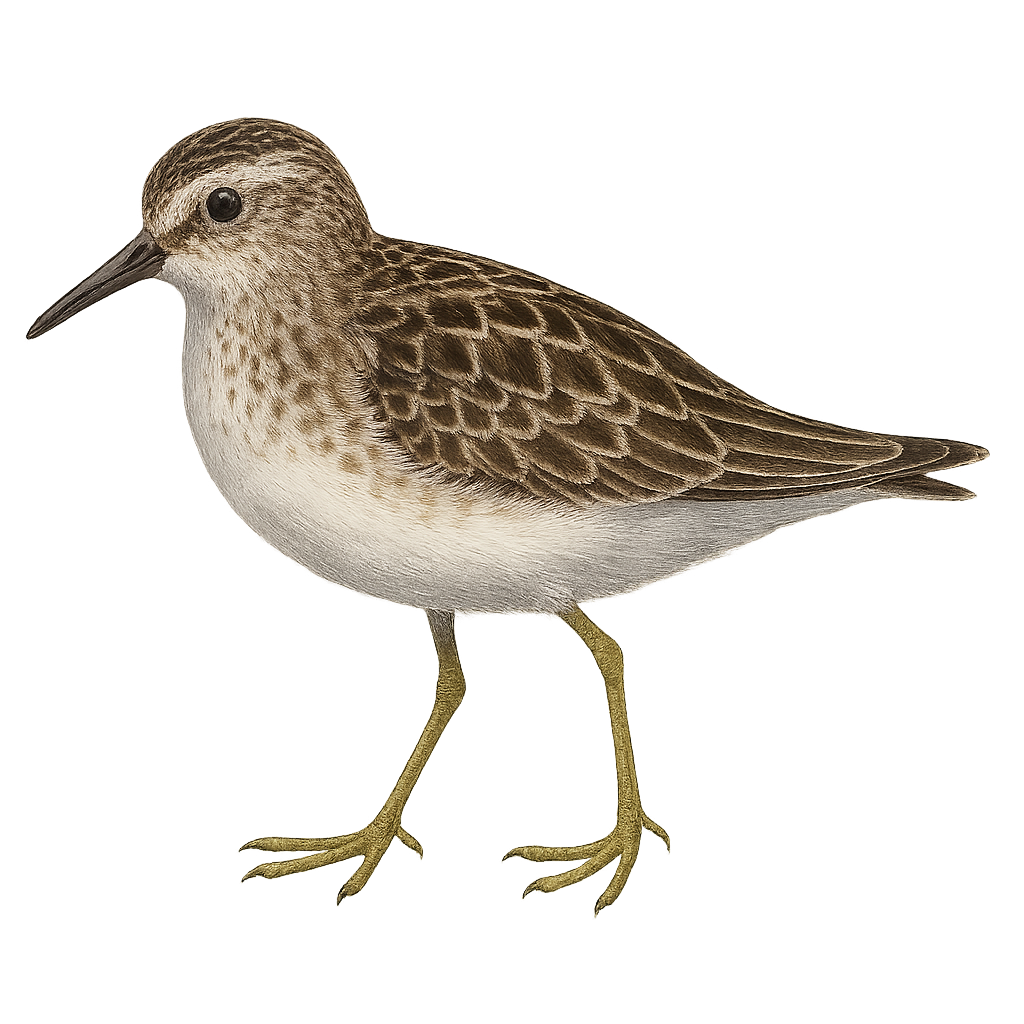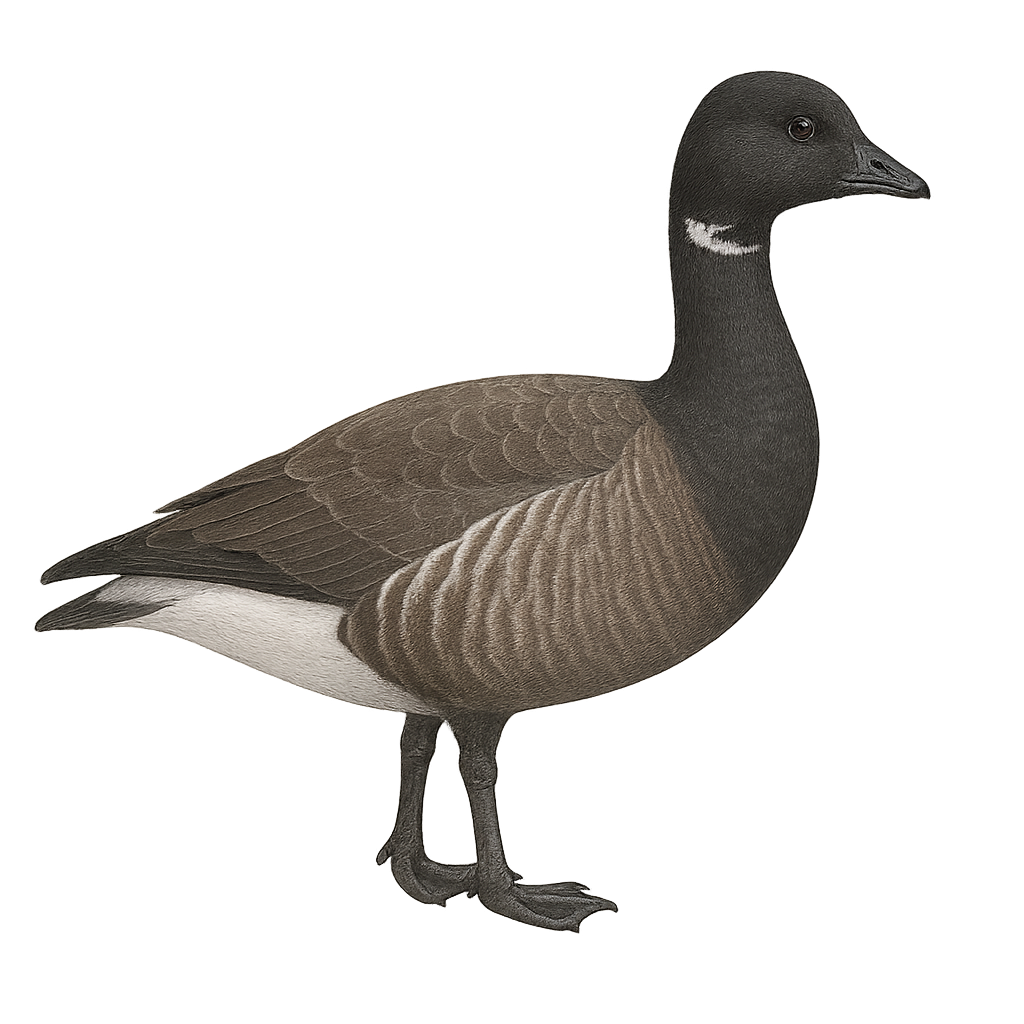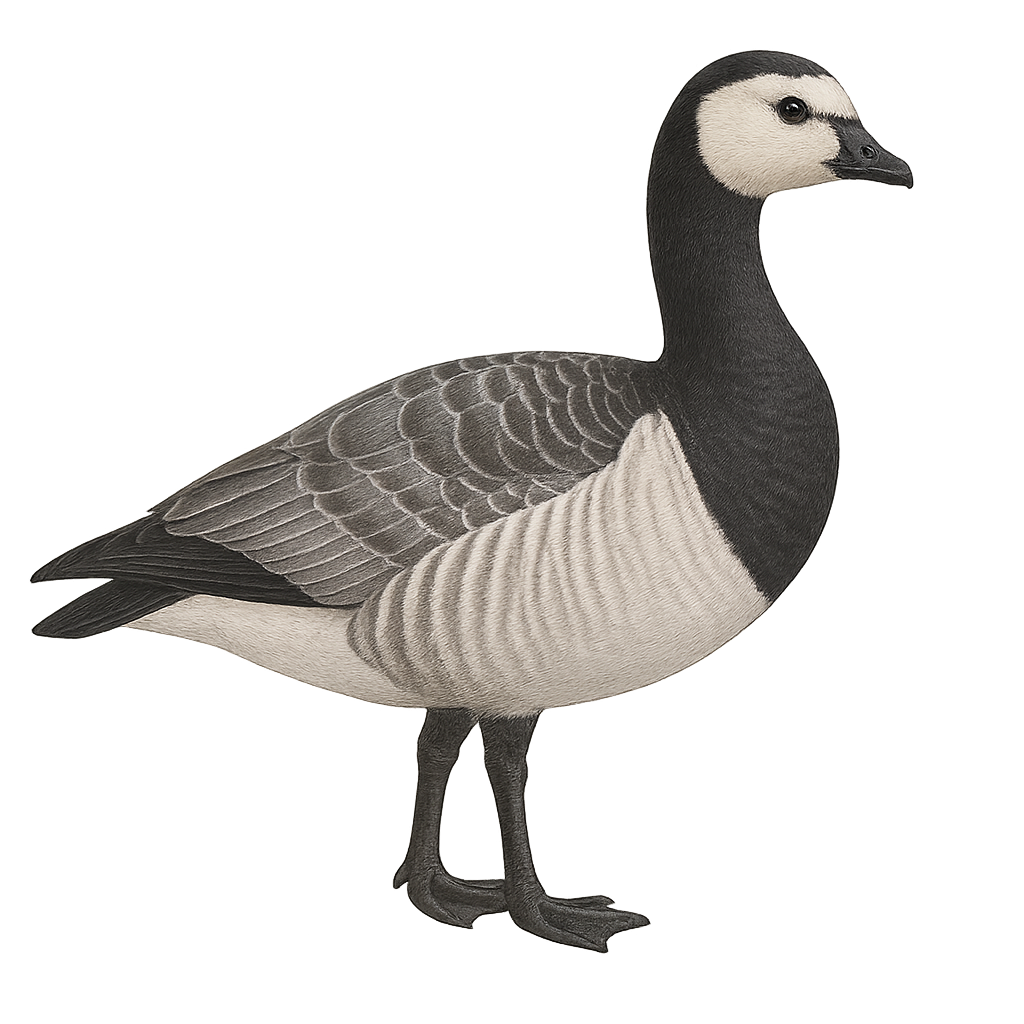The Black-throated Accentor is a small passerine bird belonging to the Prunellidae family. It is characterized by its black throat contrasting with its brown and gray plumage. Found mainly in the mountainous regions of Central Asia, it inhabits coniferous forests and shrublands. This bird is often seen in small groups, especially outside the breeding season. It primarily feeds on insects and seeds, foraging actively on the ground. Although discreet, its melodious song can be heard in spring. Its ability to adapt to different habitats allows it to survive in varied conditions, although it is sometimes threatened by deforestation and climate change.
The Blue-winged Minla is a small, colorful bird belonging to the Leiothrichidae family. It is primarily found in the humid forests and wooded areas of Southeast Asia, including India, Myanmar, Thailand, and Vietnam. This bird is recognizable by its bright blue plumage on the wings and tail, contrasting with a grayish body. It mainly feeds on insects and small fruits, which it finds by foraging in dense foliage. The Blue-winged Minla is often observed in small groups, actively moving through the canopy in search of food. Although it is relatively not very shy, it can be difficult to spot due to its dense habitat and small size.
The Actinodura nipalensis, commonly known as the Bar-throated Minla, is a medium-sized bird belonging to the Leiothrichidae family. It is primarily found in the humid montane forests of Southeast Asia, particularly in Nepal, India, and Bhutan. This bird is noted for its colorful plumage, featuring shades of grey, blue, and yellow, and its distinctive barred throat. Often seen in groups, it actively moves through foliage searching for insects and small fruits. Although relatively tolerant of human presence, it prefers dense habitats where it can easily hide. Its breeding season typically extends from spring to summer, and it builds cup-shaped nests in trees or shrubs.
The Booted Eagle is an elegant raptor, known for its narrow wings and ability to move quickly through the air. Found mainly in Europe, Asia, and the Middle East, this eagle is often seen hunting small mammals and birds in open landscapes such as meadows or fields. While it is smaller than other eagles, its agile flight and hunting technique make it an impressive bird.
During courtship displays, the Booted Eagle performs aerial acrobatics, where males dive in spirals before quickly climbing to attract the attention of females.
The Black-and-white Hawk-Eagle is an elegant forest raptor of tropical America, measuring between 51 and 61 cm in length with a wingspan of 110 to 135 cm. It is distinguished by its contrasting plumage: white head, neck, and underparts; black wings and back; and a tail barred with black and white. A small black crest adorns its head, and a black band crosses its yellow eyes. This predator inhabits humid tropical forests, forest edges, and open woodlands from southern Mexico to northern Argentina. It primarily hunts arboreal birds like toucans and parrots, but also preys on mammals, reptiles, and amphibians. Although listed as Least Concern by the IUCN, it is sensitive to deforestation and habitat fragmentation.
The Black-footed Albatross, Phoebastria nigripes, is a large seabird belonging to the Diomedeidae family. It is distinguished by its dark plumage, almost entirely black except for some white feathers around the beak and eyes. Its beak is strong and hooked, ideal for catching marine prey. This albatross is primarily found in the North Pacific, where it feeds on fish, squid, and crustaceans. Known for its long gliding flights over the ocean, it uses air currents to travel great distances with minimal effort. The species is monogamous, forming lasting pairs that return annually to the same nesting sites.
The black-browed albatross is a large seabird in the family Diomedeidae, measuring 90–100 cm in length with narrow wings spanning 200–230 cm, and characterized by a pale head marked by black brow streaks. It inhabits temperate to subantarctic oceanic waters and coastal areas, feeding mainly on fish and squid captured at the surface or by shallow dives, and breeds in large colonies on subantarctic islands. During the breeding season, pairs nest on coastal cliffs or grasslands and lay a single egg.
The Buller's Albatross, Thalassarche bulleri, is a medium-sized seabird belonging to the Diomedeidae family. It is primarily found in the southern Pacific Ocean, especially around New Zealand. This albatross is distinguished by its silver-gray plumage on the back and wings, contrasting with a pure white belly. Its beak is bright yellow with a black tip, and its eyes are ringed with black, giving it a piercing look. It mainly feeds on fish and squid, which it captures by skillfully diving into the water. The Buller's Albatross is known for its long gliding flights over the waves, using air currents to travel great distances with minimal effort.
The Buffalo Weaver, or Bubalornis niger, is a medium-sized African bird belonging to the Ploceidae family. It is primarily black with glossy highlights, and males have striking red eyes. This bird is known for its massive, ball-shaped nests, often built in colonies on thorny trees or artificial structures. It feeds mainly on seeds, insects, and small invertebrates. The Buffalo Weaver is a social bird, often seen in groups. It is widespread in the savannas and dry woodlands of sub-Saharan Africa. Although common, it is fascinating for its social behaviors and nest-building techniques.
The Blue-fronted Amazon is a medium-sized parrot, measuring about 38 to 40 cm in length. Its plumage is primarily green, with shades of blue on the forehead and yellow patches around the eyes and cheeks. The wings feature red and blue feathers, adding a vibrant touch. Native to South America, it is mainly found in Brazil, Bolivia, Paraguay, and Argentina. It inhabits various environments, from tropical forests to open savannas. Sociable and intelligent, this parrot is known for its ability to mimic human speech. Unfortunately, it is threatened by habitat loss and illegal trade.
The Brown Schiffornis is a discreet and mysterious bird, often difficult to spot due to its reserved behavior. It primarily inhabits the humid tropical forests of Central America, notably in Guatemala and Honduras. This medium-sized bird has a uniform brown plumage that allows it to blend into its surroundings. Its melodious and enchanting song is often the first clue to its presence. It feeds mainly on insects and fruits, which it captures by moving slowly through the canopy. Although its habitat is threatened by deforestation, the Brown Schiffornis remains relatively common in protected areas.
The Bar-throated Apalis is a small passerine bird from the Cisticolidae family, predominantly found in the mountainous regions of southern Africa. It is characterized by its black throat, contrasting with a white belly and olive-grey back. Males and females look similar, although males may exhibit slightly brighter colors. This bird is often seen in pairs or small groups, actively moving through dense bushes and forests in search of insects. Its song is melodious and varied, often used to mark its territory. The Bar-throated Apalis is a resilient bird, capable of adapting to various habitats, though it prefers wooded areas and dense thickets.
The Blue-and-yellow Macaw, or Ara ararauna, is a striking parrot native to the tropical forests of South America. Known for its vibrant blue plumage and bright yellow belly, this bird is a symbol of Amazonian biodiversity. Measuring about 86 cm in length, it has a strong beak suited for consuming nuts and fruits. Sociable and intelligent, the Blue-and-yellow Macaw lives in groups and communicates through a variety of calls. It plays a crucial role in seed dispersal, aiding forest regeneration. Unfortunately, it is threatened by deforestation and illegal trade, although conservation efforts are underway to protect its natural habitat.
The Baillon's Aracari is a colorful bird belonging to the Ramphastidae family. It is distinguished by its vibrant plumage, mixing shades of green, red, and yellow, and its large, multicolored beak. This bird measures about 35 cm in length and weighs between 150 and 200 grams. It primarily inhabits the humid tropical forests of South America, where it feeds on fruits, insects, and sometimes small vertebrates. Sociable, it often lives in small groups and is quite tolerant of human presence. Although its habitat is threatened by deforestation, it is currently classified as least concern by the IUCN.
The Bare-throated Bellbird, or Procnias averano, is a captivating bird belonging to the Cotingidae family. This passerine is renowned for its powerful and distinctive call, often likened to a resounding bell. The male boasts a striking white plumage with a vividly colored bare throat, while the female displays more subdued hues. This bird is primarily found in the tropical forests of South America, where it feeds on fruits and small insects. Its ability to produce loud sounds allows it to communicate effectively through the dense canopy. Although its habitat is threatened by deforestation, it remains relatively common in certain areas.
The Buff-bellied Hummingbird, Amazilia yucatanensis, is a small, colorful bird, primarily green with a cinnamon-colored chest and belly. It is native to the southern United States and Mexico, where it inhabits tropical forests, mangroves, and gardens. Known for its rapid flight and hovering abilities, this hummingbird efficiently feeds on flower nectar, playing a crucial role in plant pollination. Males are often territorial, aggressively defending their territory against intruders. The breeding season typically extends from spring to summer, with nests built in shrubs or low trees.
The Blue Whistling Thrush, or Myophonus caeruleus, is a medium-sized bird known for its striking deep blue plumage with white spots on its wings. It is commonly found in humid forests, ravines, and near water bodies in South and Southeast Asia. Its melodious and powerful song often echoes at dawn and dusk. This thrush is a solitary bird, although it can be seen in pairs during the breeding season. It primarily feeds on insects, small invertebrates, and occasionally fruits. Its ability to adapt to various habitats, including urban areas, makes it a relatively common bird within its range.
The Estrilda troglodytes, commonly known as the Black-cheeked Waxbill, is a small, brightly colored bird native to sub-Saharan Africa. It is easily recognizable by its black cheeks contrasting with its grey and brown plumage. Measuring about 10 to 12 cm in length, this bird is often seen in small flocks in savannas, grasslands, and shrublands. It primarily feeds on seeds but can also consume small insects. Its song is soft and melodious, often heard at dawn and dusk. Although relatively common in its natural habitat, it is sometimes threatened by habitat destruction and capture for the pet trade.
The Black-crowned Waxbill is a small, exotic bird known for its delicate plumage and fascinating social behaviors. It features a black head contrasting with a grey-brown body and pinkish flanks. Native to Central Africa, this bird inhabits savannas, open forests, and wetlands. It primarily feeds on small seeds, supplemented by insects. Sociable by nature, it lives in groups and builds ball-shaped nests in bushes. Its breeding season varies by region but often coincides with the rainy season. Although not endangered, deforestation and capture for the bird trade can impact its populations.
The Black-collared Barbet is a colorful bird found mainly in sub-Saharan Africa. It is distinguished by its vibrant plumage, with a bright red head and a characteristic black collar around its neck. This bird measures about 20 cm in length and has a robust beak, adapted to its diet mainly consisting of fruits, insects, and sometimes small vertebrates. It typically inhabits open forests, savannas, and wooded areas. The Black-collared Barbet is known for its distinctive call, often heard before being seen. It is a social bird, often observed in small groups or pairs. Its ability to adapt to various habitats makes it a relatively common species within its range.
The Black-throated Barbet is a medium-sized bird, approximately 20 cm in length. It is easily recognizable by its black head contrasting with its predominantly white body and black-spotted wings. This bird is endemic to the wooded regions and savannas of southern Africa, where it primarily feeds on fruits, insects, and occasionally small vertebrates. Its song is a rapid, repetitive trill, often heard at dawn. The Black-throated Barbet is a sociable bird, often seen in small groups. Its ability to adapt to various habitats allows it to thrive despite increasing deforestation.
The Blue-throated Barbet, Psilopogon asiaticus, is a colorful and fascinating bird belonging to the Megalaimidae family. It is easily recognizable by its green head, bright blue throat, and robust beak. This bird primarily inhabits the tropical and subtropical forests of Southeast Asia, where it feeds on fruits, berries, and occasionally insects. It is often seen perched on tree branches, emitting distinctive calls that resonate through the canopy. Although relatively tolerant of human presence, it prefers dense wooded areas where it can hide from predators. Its breeding season varies by region, but it is generally observed nesting in tree cavities.
The Brown-headed Barbet, Psilopogon zeylanicus, is a medium-sized bird known for its brown head and bright yellow forehead. It primarily inhabits tropical and subtropical forests, as well as open wooded areas in the Indian subcontinent. Its olive-green plumage blends seamlessly into the dense foliage, making it difficult to spot. It feeds mainly on fruits but also consumes insects. Its call is a distinctive feature, often heard before being seen. This barbet plays a crucial role in seed dispersal, aiding forest regeneration.
The Black-tailed Godwit is an elegant wader, easily recognizable by its long, slightly curved bill and long legs. It primarily inhabits wetlands and estuaries in Europe, Asia, and North Africa, where it feeds on aquatic invertebrates, worms, and insects, which it detects in the soft sediments along the shores. The Black-tailed Godwit is also known for its long migration, covering great distances between its breeding grounds in temperate regions and its wintering sites in warmer areas.
During the breeding season, males perform spectacular courtship displays, flying gracefully and emitting distinctive calls to attract females.
The Bar-tailed Godwit is a remarkable wader, easily recognized by its distinctive plumage, which varies from reddish-brown to gray and white, and its long, slightly downward-curved bill. It primarily inhabits coastal areas and wetlands in Europe and Asia, where it feeds on small marine invertebrates, mollusks, and insects, which it detects in the sediment. The Bar-tailed Godwit is a migratory bird, covering great distances between its breeding grounds in the Arctic regions and its wintering areas in more temperate zones.
During the breeding season, the Bar-tailed Godwit engages in particularly interesting nesting behavior, establishing nests on the ground in grasses or boggy areas.
The Black-throated Antshrike, or Thamnophilus melanothorax, is a bird from the Thamnophilidae family. It is recognized for its distinctive black and white plumage, with a characteristic black throat. This bird is primarily found in the humid tropical forests of the Amazon, where it feeds on insects and other small invertebrates. Measuring about 15 to 17 cm, it is often identified by its distinctive song. The Black-throated Antshrike is a territorial bird, often observed in pairs or small family groups. Although not considered threatened, deforestation poses a potential threat to its natural habitat.
The Black Skimmer, or Rynchops niger, is a distinctive waterbird known for its unique scissor-like bill. The lower mandible is longer than the upper, allowing it to skim the water's surface to catch fish. This feeding behavior is fascinating to watch. Adults have black plumage on their back and white on their belly, with long, pointed wings. They nest in colonies on sandy beaches or islands, often alongside other seabirds. Their distinctive call, a nasal bark, is often heard in coastal areas where they reside. These birds are primarily found in the Americas, from the southern United States to Argentina.
The Broad-billed Sandpiper, Calidris falcinellus, is a small wader bird belonging to the Scolopacidae family. It is identifiable by its slightly down-curved bill and brownish plumage with lighter patterns on the belly. During the breeding season, it displays more vibrant colors with black streaks on the back. This migratory bird breeds in the Arctic regions of Scandinavia and Russia and migrates to the wetlands of Africa, South Asia, and Australia for winter. It primarily inhabits marshes, mudflats, and muddy shores where it feeds on small invertebrates. Its ability to travel long distances makes it a remarkable voyager.
The Brant Goose is a medium-sized waterfowl belonging to the Anatidae family. It is characterized by its dark plumage, with a black head and neck, featuring a small white patch on the side of the neck. Its belly is lighter, contrasting with the rest of its body. This migratory bird breeds in Arctic regions and winters along temperate maritime coasts. It primarily feeds on aquatic plants and grasses found in intertidal zones. The Brant Goose is often seen in large flocks, which helps protect it from predators. Although generally discreet, it can become noisy when disturbed.
The Barnacle Goose, Branta leucopsis, is a medium-sized waterfowl belonging to the Anatidae family. It is easily recognizable by its white face contrasting with its black neck and chest. Its back is light gray, while its wings display darker gray shades. It primarily inhabits Arctic regions for breeding, migrating to more temperate areas in winter. Its preferred habitats include coastal areas, estuaries, and wet meadows. The Barnacle Goose is a gregarious bird, often seen in large flocks. It feeds mainly on aquatic vegetation, grasses, and herbs. Although its conservation status is currently assessed as "least concern," it remains vulnerable to climate change and habitat degradation.


